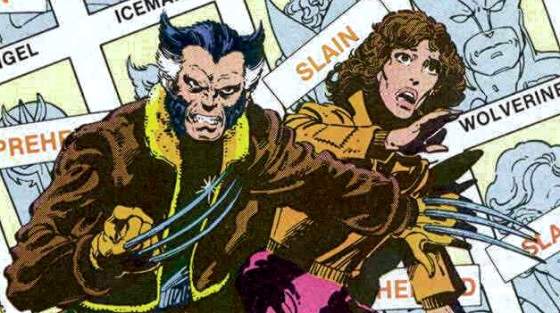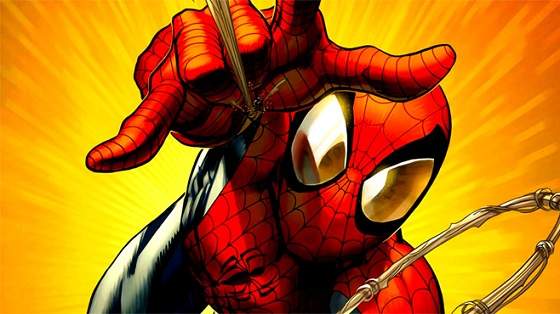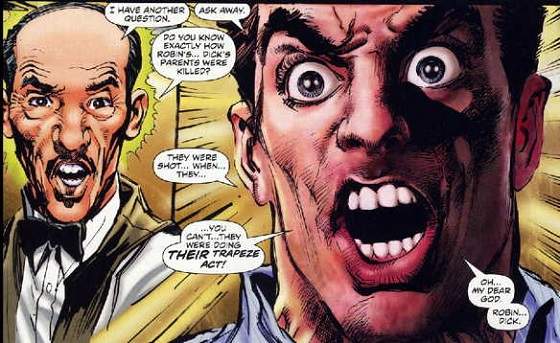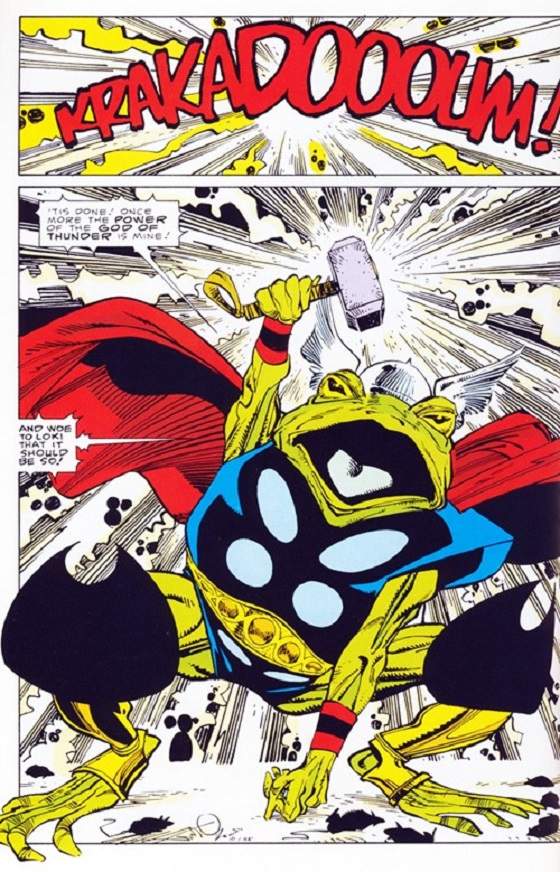8 Essential Artist and/or Writer Runs for New Comics Fans (and Old Ones Playing Catch-up)
 |
| John Byrne |
So you’re new to comics and you’re not sure where to start. Maybe you’ve seen a bunch of Marvel or DC movies and want to delve a little deeper. Perhaps you’ve always wanted to get into comics in general but you find the mass of issues and overlapping, frequently altered continuity daunting (make no mistake, it is). Thankfully, there are some good – some might say amazing – jumping-off points out there, driven by specific writers, artists, or writer-artist teams.
Here are some of the most definitive in the medium…
8. Batman, written by Scott Snyder and penciled by Greg Capullo
 |
| Greg Capullo |
The New 52 may be over, and in hindsight – hell, even at the time – it was completely unnecessary and a lot of it was a big mess. Thankfully there were some diamonds in the rough, a few series that will hopefully stand the test of time. Jeff Lemire’s fantastic Animal Man was one of them, and while I could recommend that, it’s probably too complex and dark for new readers, so instead I’ll suggest Batman, written by Scott Snyder and mostly penciled by Spawn alumnus Greg Capullo.
The New 52 Batman wasn’t Snyder’s first run on the Bat-merry-go-round, with his Black Mirror run on the pre-52 Detective Comics having been roundly and rightly celebrated. While Black Mirror was grungy and disturbing and kind of proto-True Detective in feel, Snyder and Capullo’s Batman is adventurous, action-heavy and witty in the same vein as the Paul Dini/Bruce Timm animated series and the Christopher Nolan movies, if occasionally pushing a mature-content warning (looking at you, faceless Joker!).
And Capullo’s art can be enjoyed on its own. Comics are static by their very nature, but Capullo packs each panel with such clear, direct action that it’s almost like watching a full-motion cartoon. He’s even gotten inventive with panel layouts, with the trippy issue #5 of the New 52 run inverting and contorting every which way House of Leaves-style, so that when I first read it I briefly thought I had bought a misprint. He and Snyder make a fantastic team, and I hope to see more characters like the Court of Owls and spunky electrician Harper Rowe when other teams take over.
7. Daredevil, written by Mark Waid
 |
| Paolo Rivera |
Since his 1964 debut, Daredevil has gone through as many tonal shifts as the movie Drive. A lighthearted, swashbuckling hero in his earliest appearances by Stan Lee and Bill Everett, Matt “Daredevil” Murdock was given the archetypal grim and gritty overhaul by Frank Miller in the ’80s – this was a few years before Miller wrote and pencilled The Dark Knight Returns and years before “grim and gritty” became a bad joke. Since then, Murdock has battled ninjas, demons, been temporarily replaced by Iron Fist, and lost almost everyone he’s ever cared for.
I say all this so you’ll know just how atypical and plain fun Mark Waid’s run on the Daredevil title has been. Since 2011, Waid and a collection of artists – Paolo Rivera, Chris Samnee, and quite a few others – have given Daredevil a bit of the snarky pep that normally goes hand-in-web with Spider-Man. He somersaults between rooftops without a care in the world, he’s suave and funny, he actually smiles – frequently and earnestly. Throw in some great legal drama and some of the best visual portrayals of Daredevil’s sixth sense to date and you have a winner. This is not to say it’s just a sitcom: in fact, the series gets increasingly dark, with Matt by no means avoiding torment. But it’s earned, rather than having that dread thrust upon it.
Yeah, Miller’s run and Born Again are undoubtedly iconic and deserve all the praise they get but Christ, it’s nice to see Daredevil happy again.
6. Ultimate Spider-Man, written by Brian Michael Bendis
 |
| Mark Bagley |
Ultimate Spider-Man is a weird one to recommend, as of all of the entries on this list it’s the least original. Brian Michael Bendis’ record-breaking run on Ultimate Spider-Man – he’s been its primary writer for fifteen years – is basically a condensed and updated take on the traditional Spider-Man continuity, retelling his origins, greatest battles and most tragic losses. The majority of the issues have been pencilled by Mark Bagley, helping to maintain a consistent style throughout the bulk of the run.
This is not to say Bendis is merely retreading old territory, having made his share of major changes (or improvements, from my perspective) to the classic material. Venom, for example, is no longer a disgraced photojournalist/steroid addict encased in an alien symbiote but a bitter college student who represents the dangers toxic individuals can pose to our well-being… while encased in a cancer-curing biosuit. The Green Goblin, originally a Joker-knockoff with a glider, became a more overtly monstrous Jekyll-and-Hyde figure (who, along with Hobgoblin, met an incredible – albeit temporary – end in “Death of a Goblin,” pencilled by Stuart Immonen). And Mysterio… well, Mysterio still sucks.
Unlike the regular Amazing Spider-Man title, Ultimate has actually reached a fitting end. I would name the final story-arc, but that’s a massive spoiler in and of itself. Nevertheless, Bendis has continued on with a new successor for Spidey, the younger but no less heroic and nerdy Miles Morales. And so he will probably continue writing Ultimate Spider-Man until the end of time, when Mephisto will ascend from the pit and tell him, yes son, your sentence is over.
5. The Punisher MAX, written by Garth Ennis
 |
| Leandro Fern?ndez |
Irishman Garth Ennis, known for his love of profanity and hatred for anything and anyone resembling a conventional superhero, saved vigilante Frank Castle from obscurity and mockery in 2000 with the acclaimed storyline “Welcome Back, Frank” and its ensuing series. Pencilled by Ennis’ long-time collaborator Steve Dillon, the 2000 Punisher series was pure dark comedy: Dirty Harry filtered through the funnier moments of Pulp Fiction, and no less violent.
But it was with his 2004 follow-up series, The Punisher MAX, that Ennis truly made the character his own and set the standard for every Punisher scribe to follow. Abandoning almost all of its predecessor’s black humor and catering solely to a mature audience, his 60-issue MAX run portrayed a realistically aged Castle using horrifying methods against some of the most despicable figures to ever grace – disgrace, rather – the pages of comics, including but not limited to war criminals, human traffickers and even corrupt U.S. military brass. Artists like Leandro Fern?ndez, Goran Parlov and Dougie Braithwaite illustrated Ennis’ gory visions with such detail that I legally can’t post examples unless you bring a doctor’s note.
Ennis’ MAX run is far and away the darkest title listed here, a searing portrayal – and perhaps condemnation of – vigilantism and the effects it has not only on society but on vigilantes themselves. And if nothing else, it’s a good argument for why comics need proper ratings systems like movies and video games because Jeeeeeeesus.
4. Uncanny X-Men, written by Chris Claremont, penciled by John Byrne
 |
| John Byrne |
It’s common knowledge in the nerd community that Chris Claremont and John Byrne breathed new life into the X-Men when the characters looked like write-offs, but to someone whose sole knowledge of the heroic mutants comes from the movies you might be shocked to learn how much of that continuity the writer-artist pairing was responsible for. The ’90s animated series, with its poofy hairstyles and extraneous belts and pouches, may have been aping Jim Lee’s art but at least 75% of the story material was adapted from Claremont and Byrne’s time with the X-Men in the ’70s and ’80s.
Do you like Kitty Pryde? Thank Claremont and Byrne. Were you blown away by the cartoon’s rendition of the Dark Phoenix Saga as a kid? Thank Claremont and Byrne. Thought the dystopic, dark timeline of Days of Future Past was awesome? Thank Claremont and Byrne. Do you like really mopey, self-righteous Cyclops? Well, you have a problem, but you can certainly thank Claremont and Byrne. For years, the two men made the X-Men the most successful gang of superpowered teens until Brian K. Vaughan came up with Runaways. These guys monetized angst.
3. Batman: Odyssey, written and penciled by Neal Adams
 |
| Neal Adams |
Ahhhhahahaha, just fuckin’ with you, folks. But it’s like the Manos: The Hands of Fate of comics and thus enjoyable for different reasons.
2. Swamp Thing, written by Alan Moore
 |
| Stephen Bissette |
“Swamp Thing?” you ask. “The fuck is Swamp Thing?”
I’m glad you asked, Mr. Rhetorical Device. Swamp Thing, formerly the ill-fated biologist Alec Holland, was created by Len Wein and Berni Wrightson in the early ’70s, featuring in some of DC’s lesser-known horror comics and eventually his own series. Holland was fatally wounded by a bomb in his bayou lab and dove into a swamp laced with his experimental bio-restorative formula. He rose from the muck as the monstrous but still kind-hearted Swamp Thing to fight monsters, corrupt scientists and all nefarious sorts, including eastern European cyborg and necromancer Anton Arcane.
But the Swamp Thing readers know and praise comes from the series penned by comics legend Alan Moore in the early 1980s. Moore retconned Swampy’s origin story, turning him from a mutated Alec Holland into a mass of sentient, regenerative swamp algae that thinks it’s Holland. This retooled Swamp Thing veered deeper into horror territory while simultaneously venturing more into the DC universe. There are cameos by the Justice League and the Floronic Man, and a story arc late in the series is set in Gotham City, with Batman, Jim Gordon and all the rest. The series is also where the Hellblazer himself, John Constantine, made his first appearance.
Moore’s run on Swamp Thing explored ideas of consciousness, identity, ecology and even mixed-species relationships – in the issue “Rite of Spring,” Swampy and girlfriend Abby Arcane had a kind of psychotropic, mind-meld version of sex that’s sort of like getting it on with an Asari in Mass Effect. The series features detailed, realistic art by Stephen Bissette and John Totleben – the latter having worked with Moore on Miracleman. If you liked Alan Moore in his prime, back before he started writing erotica about fictional teenaged girls, this is for you.
1. The Mighty Thor, written and penciled by Walt Simonson (feat. Sal Buscema)
 |
| Walt Simonson |
Stan Lee and Jack Kirby may have given the Marvel version of everybody’s favourite Norse deity life, but in the span of 43 issues Walt Simonson almost singlehandedly made the God of Thunder the character that movie audiences have now unexpectedly embraced. Dashing, good-natured, get-things-done Thor was very much Simonson’s brainchild; Superman by way of Beowulf. More importantly, Simonson fleshed out Asgard and its denizens, intertwining several plots including Loki, the Warriors Three, Sif and the alien Beta Ray Bill, one of the few beings other than Thor able to wield Mjolnir.
Simonson’s defining run on The Mighty Thor mixed melodrama with lighthearted comedy, varying in scale from a massive battle in the heart of New York City to the misadventures of Volstagg’s precocious young daughter in Asgard. Several issues, including a brief spinoff series, focused on Thor’s close friend Balder, whose skills as a warrior were tempered by his fear of his own violent tendencies. Plus there’s that time Thor got turned into a frog which, while sounding utterly inane, was actually really funny and charming.
 |
| Walt Simonson |
| This happened and it was amazing. |
And all throughout, Simonson’s stunning art brings these branching stories to life, his style blending Kirby-esque action with a Saturday morning cartoon aesthetic. Some later issues were illustrated by Sal Buscema, and his finishes were used to tremendous degree on the issue in which Thor battled the Midgard Serpent – one which consisted almost entirely of beautifully rendered splash pages.
Simonson’s Thor is one of those rare series that veers between tones and characters and story arcs without ever jumping the shark or becoming too crowded. It ends feeling both perfectly resolved and open-ended. As far as I’m concerned, it’s a master class in graphic storytelling one no comics fan should miss.
Previously by Daniel Link
6 Reasons Nerd Culture Needs to Take a Long, Hard Look at Itself
7 Ways Alien: Isolation Helped Me Accept My Anxiety Disorder
7 Reasons Outlast Is the Horror Game You Need
5 Reasons Ground Zeroes is the Best Metal Gear Game Ever Made (and 3 Ways It Isn’t)
7 Lessons Game Designers Can Learn From Telltale’s The Walking Dead
